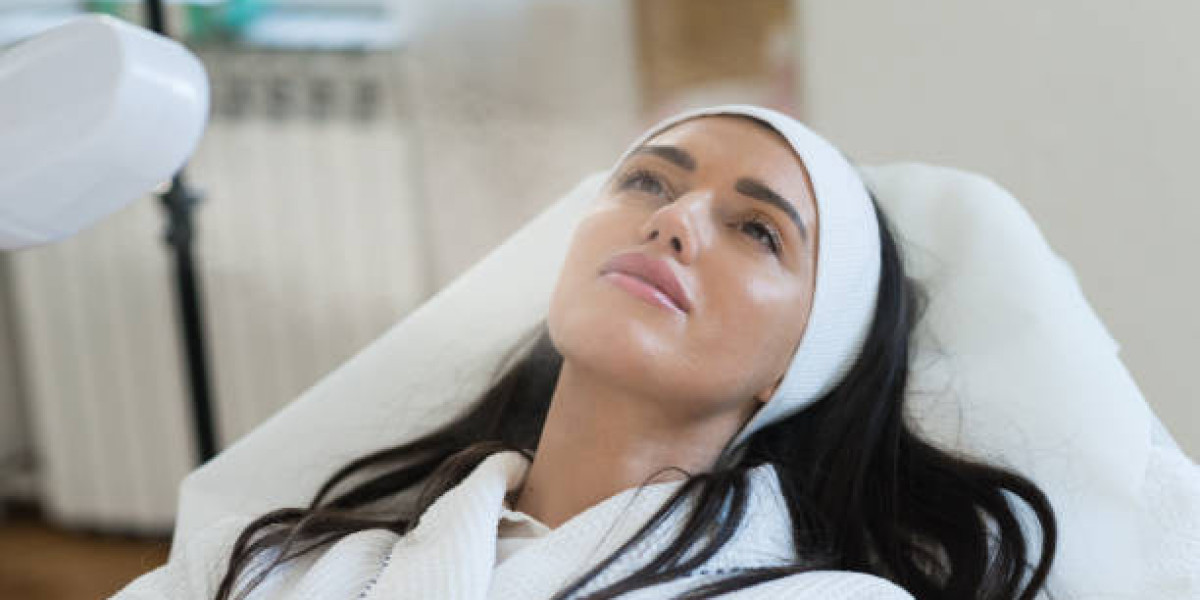HydraFacial is a popular skincare treatment known for delivering deep hydration, exfoliation, and a radiant glow. But sometimes, instead of the expected glow, your Skin Looks Worse After Hydrafacial. Many individuals experience redness, breakouts, or dryness post-treatment, leaving them puzzled and worried. If you’re facing such issues, rest assured you’re not alone. In this article, we'll explore why skin looks worse after HydraFacial and offer expert-backed solutions to restore your skin’s health.
Why Does My Skin Look Worse After HydraFacial?
The HydraFacial is designed to cleanse, exfoliate, and infuse serums into the skin to promote hydration and rejuvenation. However, some side effects may occur, causing your skin to temporarily appear worse. Understanding the underlying reasons can help alleviate concerns and guide you to a smoother recovery.
1. Post-Facial Detoxification
One of the most common reasons your skin looks worse after HydraFacial is a natural detox process. When impurities are drawn out of the skin, it may lead to breakouts or slight irritation as your pores purge toxins. While it may seem alarming, this detoxification is actually a positive sign that the treatment is working to deeply cleanse your skin.
2. Redness and Inflammation
Immediately after a HydraFacial, it's common to experience some redness and slight swelling, especially if your skin is sensitive. The exfoliation and extraction phases can lead to temporary irritation, making your skin look flushed or inflamed. This redness usually subsides within a few hours to a day, but in rare cases, it may last longer.
3. Dryness and Peeling
HydraFacial includes a mild exfoliation step, which may cause your skin to peel or feel dry as dead skin cells are removed. While the treatment is hydrating, the exfoliation process can strip away the outer layer of skin, leading to temporary dryness or flakiness. It's important to stay moisturized after your HydraFacial to help replenish your skin's natural barrier.
4. Breakouts and Congestion
Some people notice breakouts or an increase in clogged pores after HydraFacial, especially those with acne-prone skin. This may be due to the stimulation of oil glands during the treatment or as part of the detox process. Breakouts usually clear up within a week or two as the skin adjusts to the deep cleansing effects of the HydraFacial.
5. Sensitive Skin Reactions
If you have sensitive skin, certain ingredients used during the HydraFacial, such as salicylic acid or glycolic acid, may cause mild reactions. This can result in itching, stinging, or increased sensitivity to other skincare products. Consulting with your esthetician beforehand about your skin’s tolerance can help them tailor the treatment to avoid irritants.
Expert Solutions: How to Fix Skin Issues After HydraFacial
Now that we understand the potential causes, let’s dive into expert-recommended fixes for when your skin looks worse after HydraFacial. These tips will help you manage post-treatment issues and get your skin back to its glowing best.
1. Hydrate, Hydrate, Hydrate
Hydration is key to ensuring your skin heals quickly and remains nourished after a HydraFacial. Use a gentle, hydrating moisturizer that contains ingredients like hyaluronic acid, glycerin, or ceramides. These help lock in moisture and support the skin’s barrier function, alleviating dryness and flakiness.
Expert Tip:
Drink plenty of water throughout the day to keep your skin hydrated from the inside out. Topical hydration combined with adequate water intake helps expedite the recovery process.
2. Use a Soothing Serum
If your skin is red or irritated after a HydraFacial, incorporating a calming serum with ingredients like aloe vera, chamomile, or niacinamide can help reduce inflammation. These ingredients soothe the skin, ease redness, and prevent further irritation.
Expert Tip:
Avoid serums with strong acids or exfoliating agents immediately after your HydraFacial, as they may worsen irritation.
3. Skip Harsh Skincare for a Few Days
For the first few days post-HydraFacial, it’s crucial to avoid harsh products that may exacerbate sensitivity. Skip retinoids, chemical peels, or exfoliating scrubs, and stick to a gentle cleanser, hydrating serum, and moisturizer.
Expert Tip:
Choose a cleanser that is sulfate-free and formulated for sensitive skin to avoid stripping your skin’s moisture barrier.
4. Apply Sunscreen Religiously
After a HydraFacial, your skin is more vulnerable to environmental stressors, particularly UV rays. Wearing a broad-spectrum sunscreen with an SPF of 30 or higher protects your newly exfoliated skin from sun damage and hyperpigmentation.
Expert Tip:
Opt for a sunscreen that’s mineral-based (like zinc oxide or titanium dioxide) as these are gentler on sensitive skin and less likely to cause irritation.
5. Use a Humidifier
HydraFacial treatments can occasionally leave the skin feeling dry, especially in dry or cold climates. Running a humidifier in your room can help maintain the skin’s moisture levels by adding hydration to the air, aiding in the recovery process.
Expert Tip:
Use the humidifier at night while you sleep to keep your skin hydrated throughout the night.
When Should You See a Dermatologist?
Most post-HydraFacial skin issues resolve on their own within a few days to a week. However, if your skin looks worse after HydraFacial and the problem persists, it may be time to consult a dermatologist. Here are some warning signs that indicate it’s time to seek professional help:
- Prolonged Redness or Swelling: If redness or swelling lasts more than three days, it could indicate a more severe skin reaction.
- Severe Breakouts: If breakouts worsen or do not clear up within a week, a dermatologist may need to prescribe a medicated treatment.
- Unrelenting Sensitivity: If your skin remains sensitive, itchy, or inflamed despite gentle care, there may be an underlying issue that requires a dermatologist’s attention.
Preventing Skin Issues Before Your Next HydraFacial
To avoid post-treatment skin concerns in the future, there are a few steps you can take before your next HydraFacial session. Preventative measures are the best way to ensure your skin looks its best after treatment.
1. Communicate with Your Esthetician
Before your HydraFacial, let your esthetician know about any skin sensitivities, allergies, or recent treatments (such as peels or lasers). This information will help them customize the procedure to avoid using any harsh ingredients that may irritate your skin.
2. Prep Your Skin Properly
Ensure your skin is properly prepped by maintaining a solid skincare routine leading up to your HydraFacial. Avoid retinoids or other strong exfoliants a few days before the treatment to minimize the risk of irritation.
3. Choose a Reputable Clinic
Selecting a clinic with experienced professionals is essential for reducing the chances of post-HydraFacial skin issues. A qualified esthetician will assess your skin type, needs, and concerns before tailoring the treatment to ensure optimal results.
Final Thoughts: Why Your Skin Looks Worse After HydraFacial
While HydraFacial is celebrated for delivering instant hydration and a glowing complexion, some individuals may experience temporary skin issues. Redness, breakouts, and dryness can occur, but these side effects typically resolve quickly. With proper aftercare, including hydration, gentle products, and sun protection, your skin will soon recover and reveal the full benefits of your HydraFacial.
If you’re concerned that your skin looks worse after HydraFacial, remember that these reactions are usually short-lived and manageable with the right care. However, don’t hesitate to reach out to a dermatologist if issues persist. By understanding the causes and taking the right steps to address them, you can enjoy a smooth, glowing complexion after your next HydraFacial.



